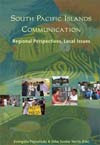 Michele Ong, AUT journalism graduate working for the Rodney Times, spent three months in China earlier this year on an AUT University-
Michele Ong, AUT journalism graduate working for the Rodney Times, spent three months in China earlier this year on an AUT University-China Daily
Exchange Internship organised by AUT's Pacific Media Centre with Asia:NZ Foundation funding for air travel at the online arm of China’s national English newspaper, China Daily.com.cn. Here are some of her experiences and tips she shared on her return.I WENT to Beijing in April 2010 - by then I had already been working for the
Rodney Times for three months, but my editor was very supportive of me and granted me three months off.
The organisation is comprised of the newspaper,
China Daily, and the website,
ChinaDaily.com.cn. Both are independent of each other in terms of operation but share the same masthead. I worked as a copy-editor for the website’s travel and culture department.
I had an amazing experience working in Beijing—I definitely enjoyed my time there.
Working for the website’s travel department, I spent my days editing travel brochures and cultural stories. Although it sounds cushy, the reality of it is quite different. The brochures were often many pages long (I once edited a 16-page long article on Anhui province which took me a good three days. I later discovered it was bound, printed and distributed to visitors).
The brochures were also often translated into English from Mandarin by a freelance translator or someone who works for the local government tour board. So deciphering the sentences can sometimes be a major challenge as well as a huge test of patience. I did the best I could with those stories.
But what I’ve learnt is as long as you are enthusiastic, polite and willing to learn, the local colleagues are more than happy to help you understand the mumbo-jumbo that’s in front of you. It can be tempting at times to just do a “whatever” job in editing the pieces—after all, it’s not like they are none the wiser, right? Wrong. I checked with a local colleague and he told me they can sort of tell if you’ve put any effort into editing the stories.
Sometimes you’d have the reporters coming back to you asking about the changes you’d made to their work. The thing to remember is, they are not undermining your work, but they are just keen to learn. If I was not pressed for time, I would explain to them the changes that I’d made. They were usually very grateful for any input.
 Travelling to Anhui
Travelling to AnhuiDuring my internship, I was very fortunate to be given the opportunity to
travel to Anhui province with a local colleague. Anhui’s local tourism board had just launched a campaign to promote tourism in their city and was keen to have two
China Daily reporters do a write-up.
The board sponsored me and my colleague’s accommodation and food. The local tourism board put us up in a fancy hotel by Shanghai’s The Bund before arranging a two-day tour for us at Anhui, where we climbed Huangshan Mountain and visited an ancient town. My job was to do a write-up of the trip. It can be found here.
Although it was a very tiring week, with lots of late nights (I was basically my colleague’s editor on demand. She would write the story and have me edit it before sending it back to the website), early mornings and crazy long hours on the road (I counted I had spent at least 33 hours on the road in just a week), it was definitely one of my highlights working with
China Daily.
When I whined to my local friend about my five hour bus trip from Huangshan Mt to Hefei, capital of Anhui, followed by a 12-hour ride from Hefei back to Beijing (all on the same day), he said “You’re now travelling like a local!”.
Living in BeijingMy work hours were 8.30pm till 5.30pm with an hour’s lunch break. I was given an allowance of 2000 yuan a month (NZD400). I was given an apartment at the newspaper’s compound.
Because I was a “foreign expert” I had the whole apartment, fully furnished, to myself (I even got the newspaper delivered to my room every morning. It’s unbelievable). It got a bit lonely at times, going home to an empty apartment but I can’t complain because it beats having to share it with a stranger. I didn’t have to pay for rent, although I did have to pay for utilities which were a flat rate of 300 yuan a month (NZD60). If you’re too caught up in other work to sweep and mop your apartment (Beijing is one very dusty city), for 50 kuai (NZD10) you can get the apartment service lady to come and tidy your apartment for you.
As for my meals, I initially had my breakfast, lunch and dinner at the newspaper’s canteen but I soon got bored with it and would only have lunches there with my colleagues. Canteen food costs on average eight yuan (approx NZD 2.50) for rice and two meat/vegetable options.
I found my three month stint at Beijing to be a bit short, although I’m sure my editor would dispute this. At times I found the Chinese capital overwhelming with its traffic jams and its crowds (people everywhere!) but I soon got used to it. It took me about a month to get used to the work environment and find my way around Beijing using the subway.
Tips for surviving in Beijing:• Learn basic Chinese. I majored in Chinese when I was at university, so I can understand and speak the language, even if I’m not very fluent for lack of practice. However, basic knowledge of Chinese will be an advantage. If all fails, have an English-Chinese app loaded on to your iPhone, a complete life saver.
• Make contact with the intern who went before you. I got in touch with G

uanny Liu who went in 2009.
• Do make friends with the locals. I found them to be very friendly and helpful. They helped me settle down and even took me to out during the weekends to popular tourist spots.
• Do make friends with the foreigners, because sometimes you just want to have some good old burger and fries.
• Do bring some food (optional) such as longlife milk, Milo, chocolates, biscuits… your favourite foods basically. You don’t want to be left out in the cold should homesickness strike.
• Do pack medication such as Panadol, cough drops, cold/flu and diarrhoea tablets.
• Do notify New Zealand Embassy you’re heading to Beijing.
• Go with an open mind and have fun
Pictures: Top: Michele Ong in news presenting mode with colleagues at the China Daily Online (Photo: David Robie); Michele in assignment in Anhui (Photo: Michele Ong); and a China Daily editorial conference (Photo: David Robie).AUT's School of Communication Studies Asia-Pacific internships organised by the Pacific Media Centre with support by the Asia: NZ FoundationPacific Media Centre's Facebook for internship studentsKristina Koveshnikova's updated AUT 'survival kit' for Beijing.
 Pacific Scoop: By Courtney Wilson
Pacific Scoop: By Courtney Wilson












































